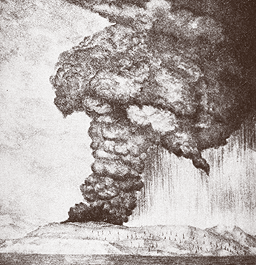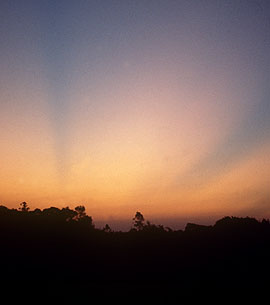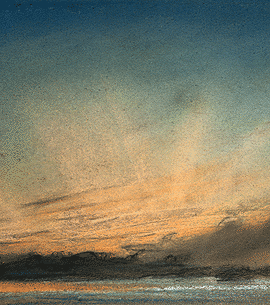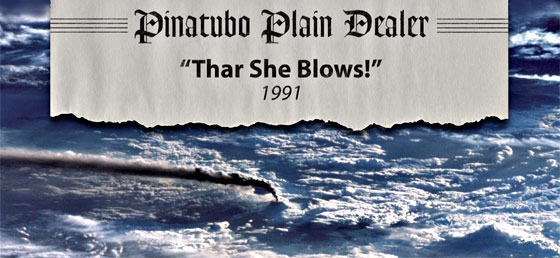Volcanic Eruption!
Aerosols from Volcanoes
Erupting volcanoes blast out fine particles known as aerosols that can circle the globe, blocking sunlight and dropping temperatures worldwide. Snow fell in New England in June 1816, making it the “Year without a Summer.” The deep freeze was partly the result of aerosols and ash spewed from the Tambora volcano in Indonesia in 1815, the largest recorded volcanic eruption.

- The August 1883 eruption of Krakatoa shot 25 cubic km (six cubic miles) of ash and rock into the atmosphere. The sound of the explosion was heard 4800 km (3000 miles) away.
- Photo © CORBIS

- When partially blocked by trees or clouds, light from the setting sun breaks into unique beams called crepuscular rays that resemble the unusual sunsets produced by volcanic eruptions. Light from crepuscular rays scatters off gases in the atmosphere much as sunlight deflects off volcanic aerosols.
- Photo © Aden and Marjorie Meinel

- The Krakatoa eruption created spectacular sunsets for years. Light from the setting sun scattered off aerosols of sulfuric acid that circulated over much of the globe. The acid came from a mixture of water vapor and the sulfur dioxide gas blasted out of the volcano.
- Sketch by William Ascroft © National Museum of Science and Industry, London

